Beginners Guide to Self Sufficient Homesteading
This past year was our first year on our 5-acre, self sufficient homestead and we dove deep into growing enough food to feed our family all year. We came a long way, supplying 80-90% of our own food with a basement full of storage crops, freezers full of meat and frozen fruit, and plenty of dried and canned produce foraged or from the garden to last us through the winter.

How we got here
Our formerly suburban family purchased a foreclosed, 5-acre farm in the summer of 2020, fixed it up, and moved in just in time for our third child to be born. That first partial year on the farm was a whirlwind, but we still managed to get a rotational grazing system up and going with our couple of cows and start a good-sized garden. In 2021, we wanted to take it to the next level and see if it was possible to feed our family year-round and create a more self sufficient homestead.
But what would we grow?
Tomatoes, carrots, and other seasonal vegetables were in our wheelhouse, but how in the world do you go about growing enough food to feed a family of five through the winter?
One big piece of the puzzle came in the form of a book we read that winter called The Resilient Gardener, by Carol Deppe. It focused on 5 things to grow: corn, beans, squash, potatoes, and eggs from raising poultry as a source of protein. And that’s when the lightbulb flipped on!
Unlike the typical garden veggies we grew prior, these were hearty, storage crops designed to last weeks, even months when properly stored and preserved. The very foods our ancestors would have grown, stored, and eaten to rely on well past the growing season.
Around that same time, we came across the Three Rivers Challenge on Instagram. The challenge was to not go to the grocery store but instead eat solely out of your preserved, frozen, and pantry items for the month of January and February.
That was it! We weren’t crazy. Other people were doing this on their self sufficient homesteads and we knew we could too. And focusing on these storage crops – corn, beans, squash, potatoes, eggs – was going to get us there.
So that’s where we set our sights for the 2021 growing season. Only one problem…
How do we grow and store a winters worth of food?
When it came to growing corn, beans, squash, and potatoes, we had some experience growing those items in the past. But nowhere near the scale needed to last us through the winter until next growing season.
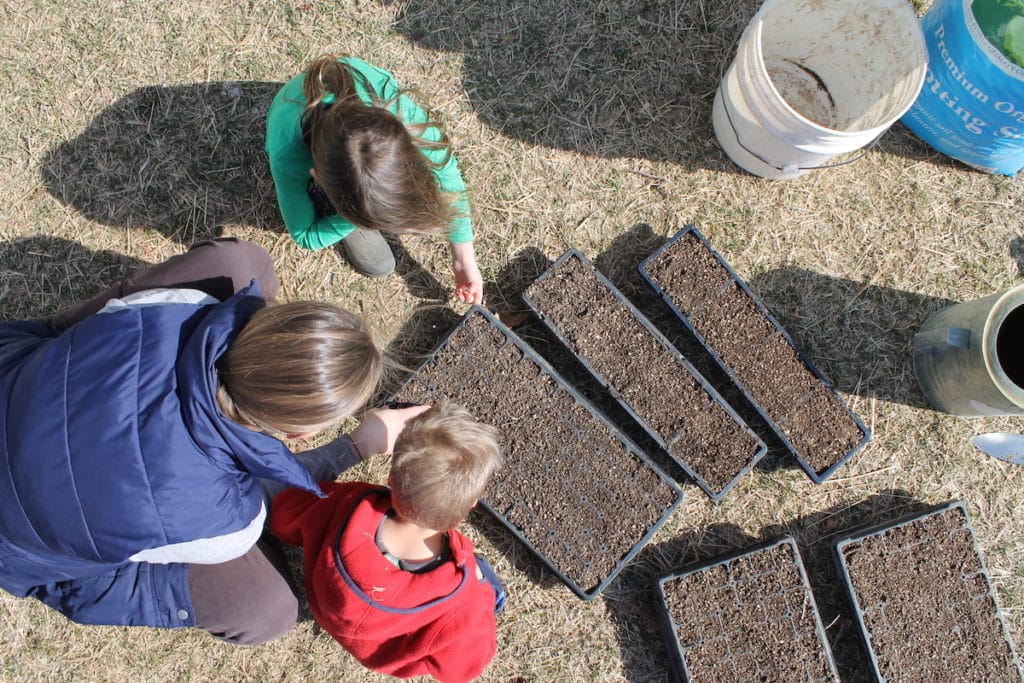
What we needed was a plan. In the dead of winter, we attended an online conference and watched a session where a farmer walked through the three-sisters growing method. We’d known the term but never delved into the “why” of this method. The three sisters are an ancient, Native American method of growing corn, beans, and squash together in a symbiotic relationship.
For generations, Native Americans relied on the bounty of these three plants grown in unison to provide fresh crops to feed themselves all winter long. Once corn is planted and established on a mound, the beans are planted around it and use the corn as a natural trellis. The beans, being a legume, also fixate nitrogen back into the soil which the corn craves for growth. Then, the squash is planted in between mounds and acts as a massive canopy of mulch to keep the whole system moist through hot, dry summers.
SOLD!
It was the right thing at the right time and we ran with it. Alongside the three sisters garden, we also wanted to incorporate growing potatoes. So, we ordered a bunch of seed and started to formulate a rough plan of how it might all come together.
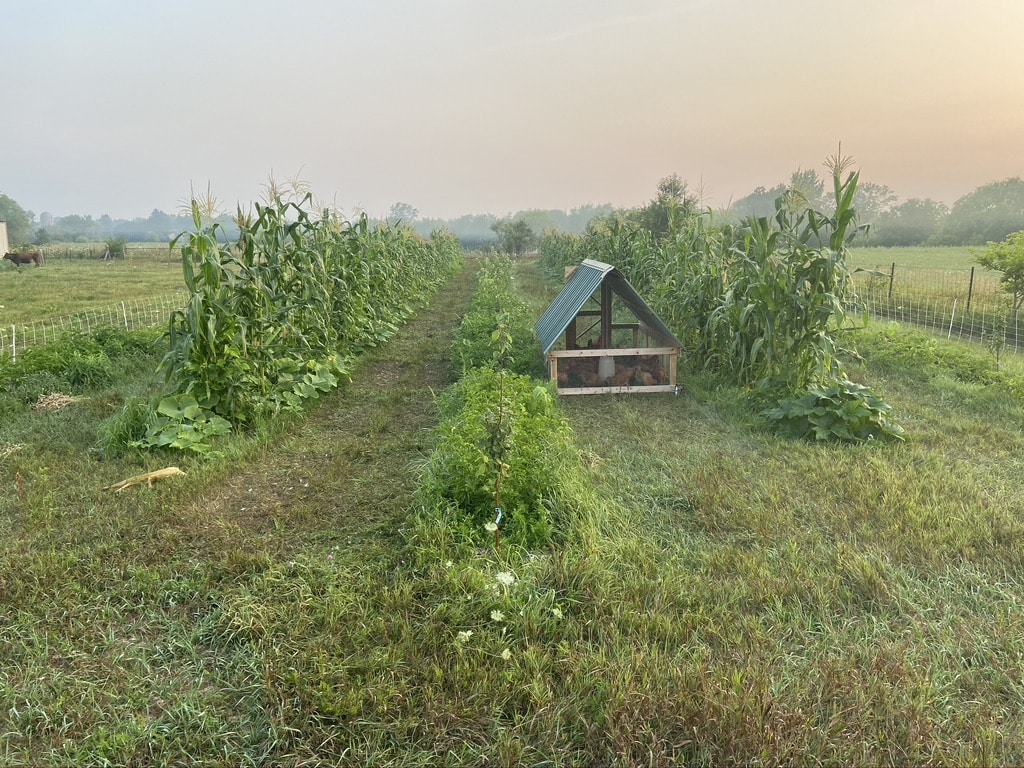
How we grew a three-sisters garden, potatoes, and thousands of pounds of food
We carved out a roughly third-acre section of a former goat pasture on our 5 acres and mapped it all out. Two 150 ft. rows, about 4 ft. wide, were tilled up for planting the three sisters. We made mounds every 4 ft. that the corn and beans were planted on, and squash were planted between each mound.
Next, we tilled up another three rows, similarly sized, to plant potatoes. From our previous experience, we applied the 1:8 rule, where every 1 lb. of potatoes planted should yield about 8 lbs. of potatoes. So, we planted around 50 lbs. figuring, we’d get around 400-500 lbs. to last our family of 5 through the year.
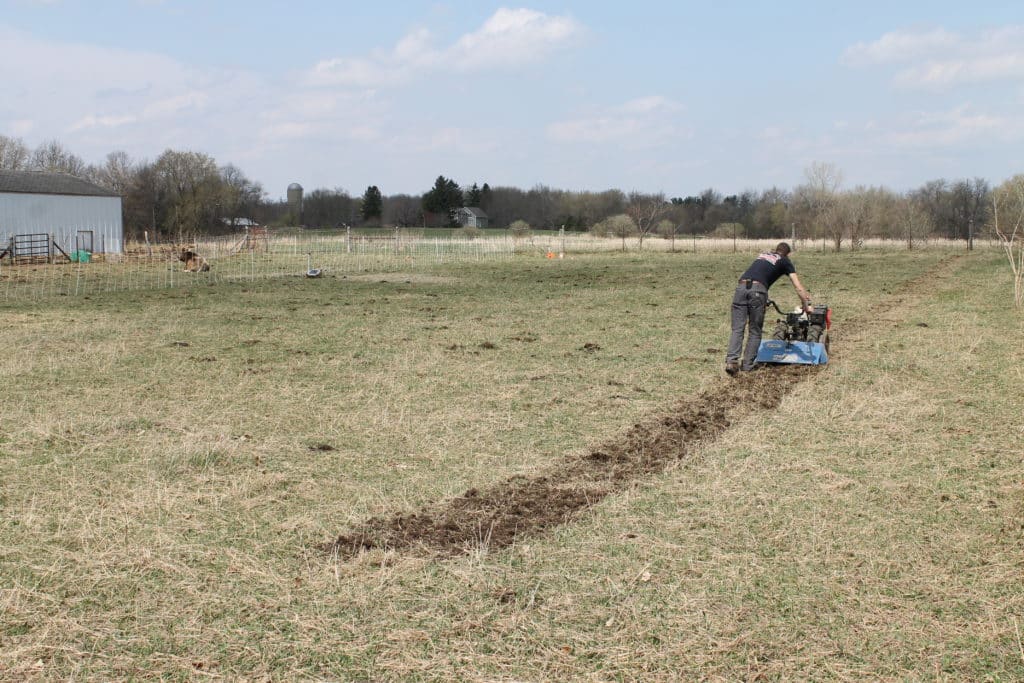
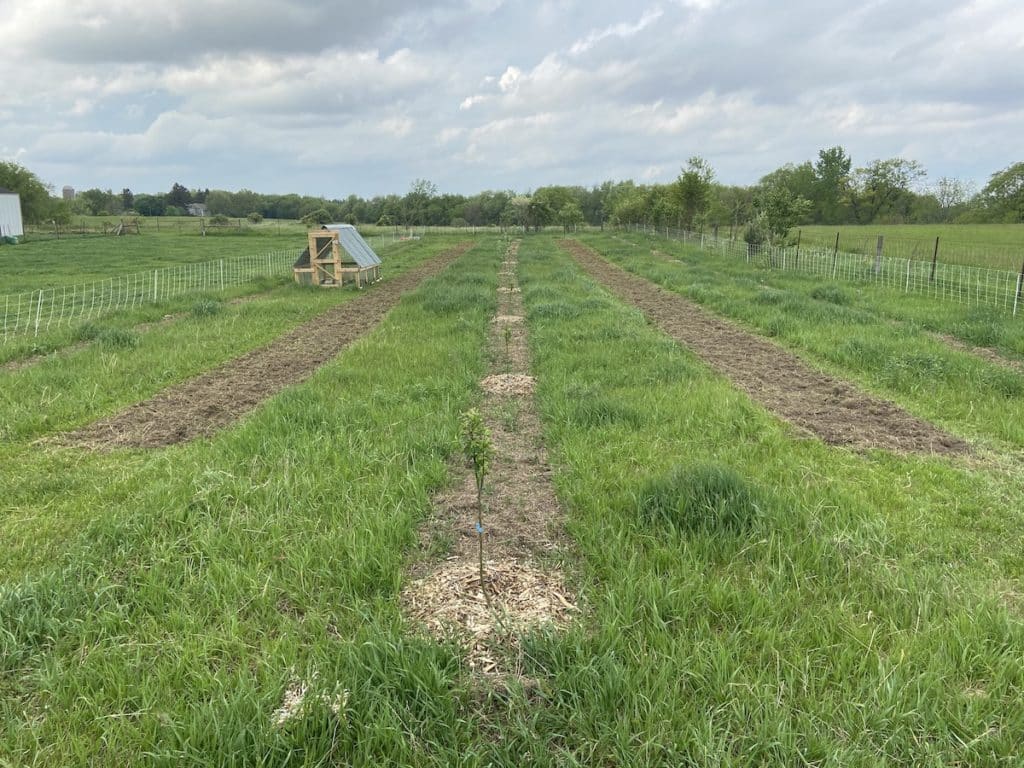
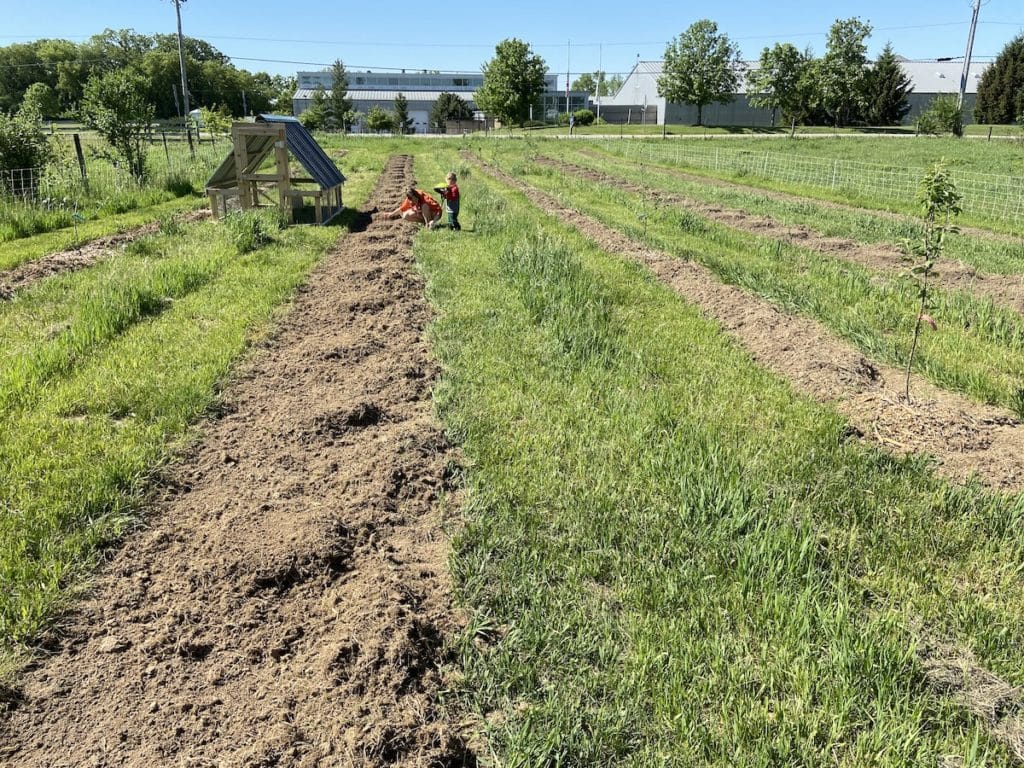
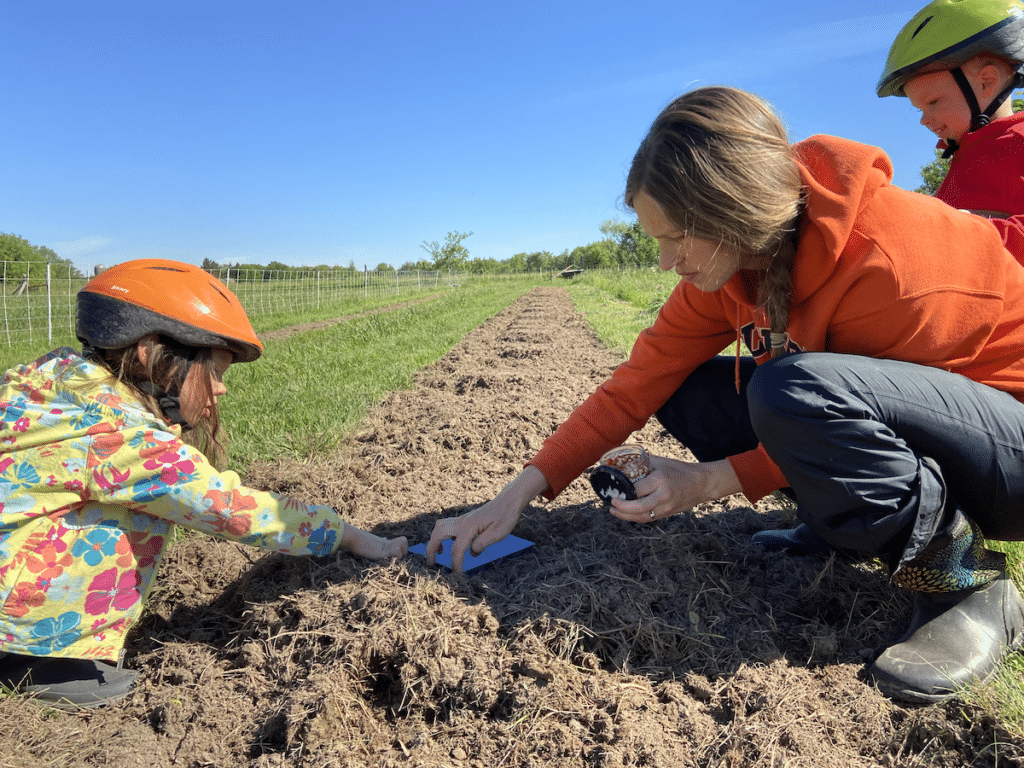
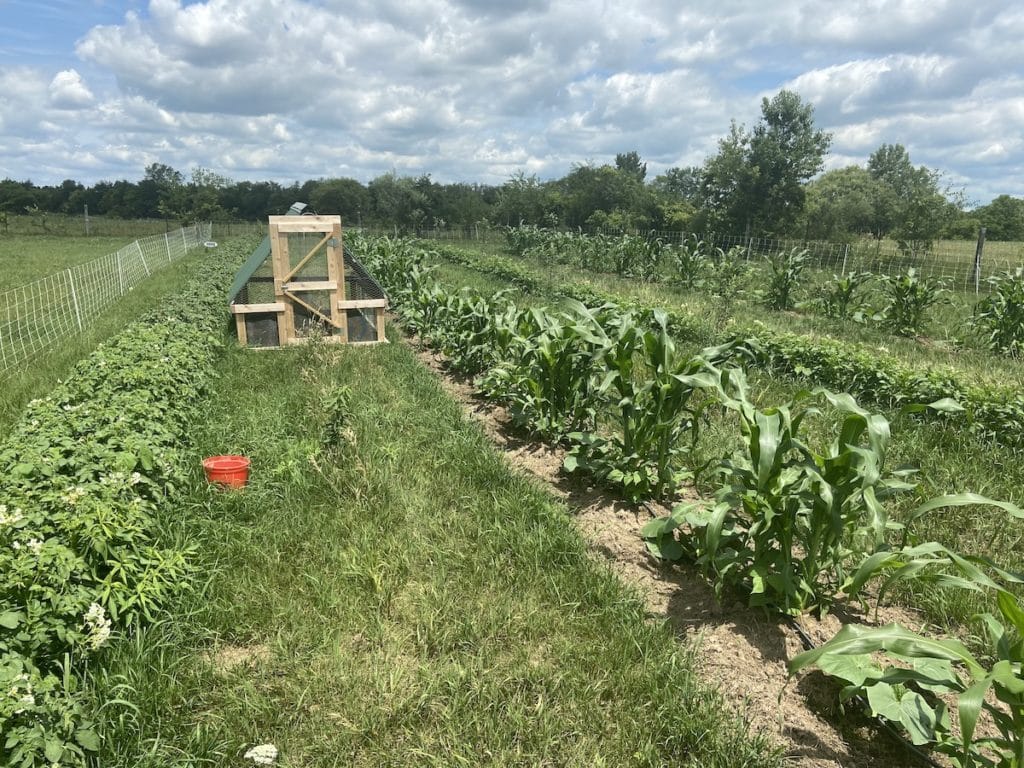
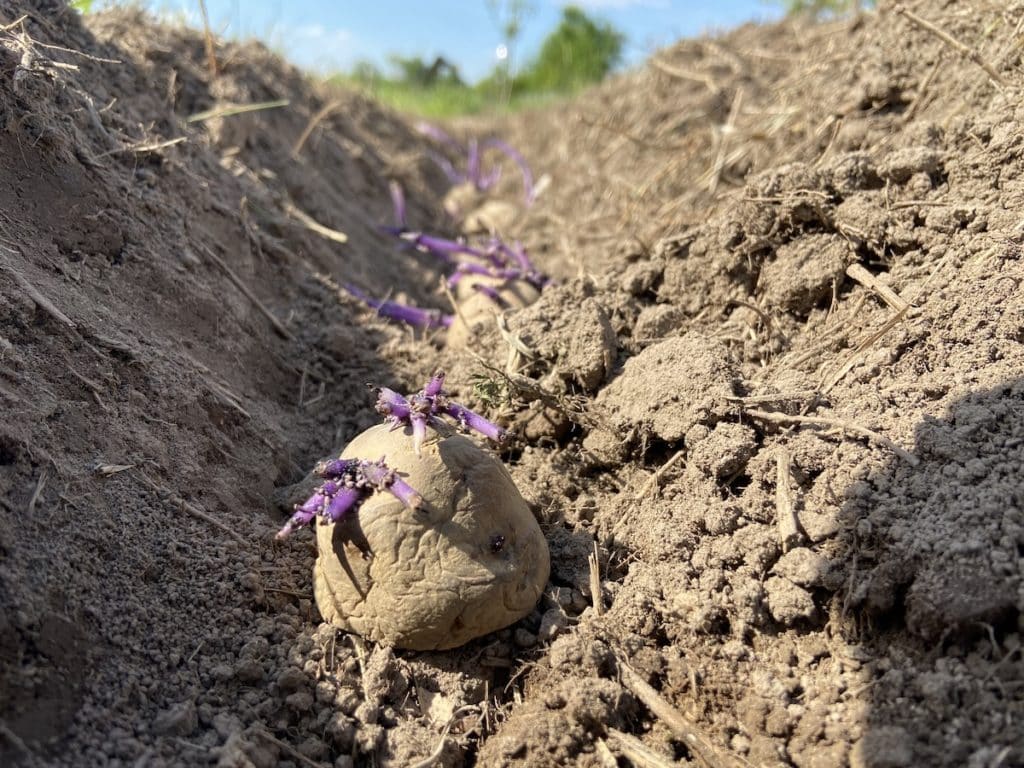
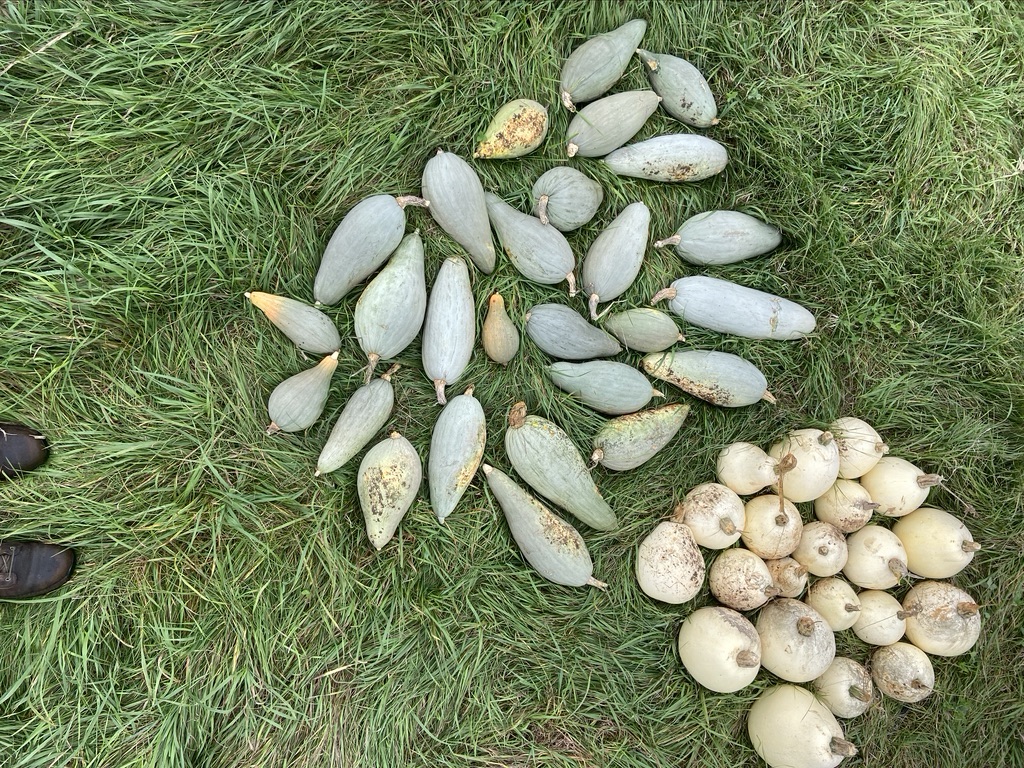

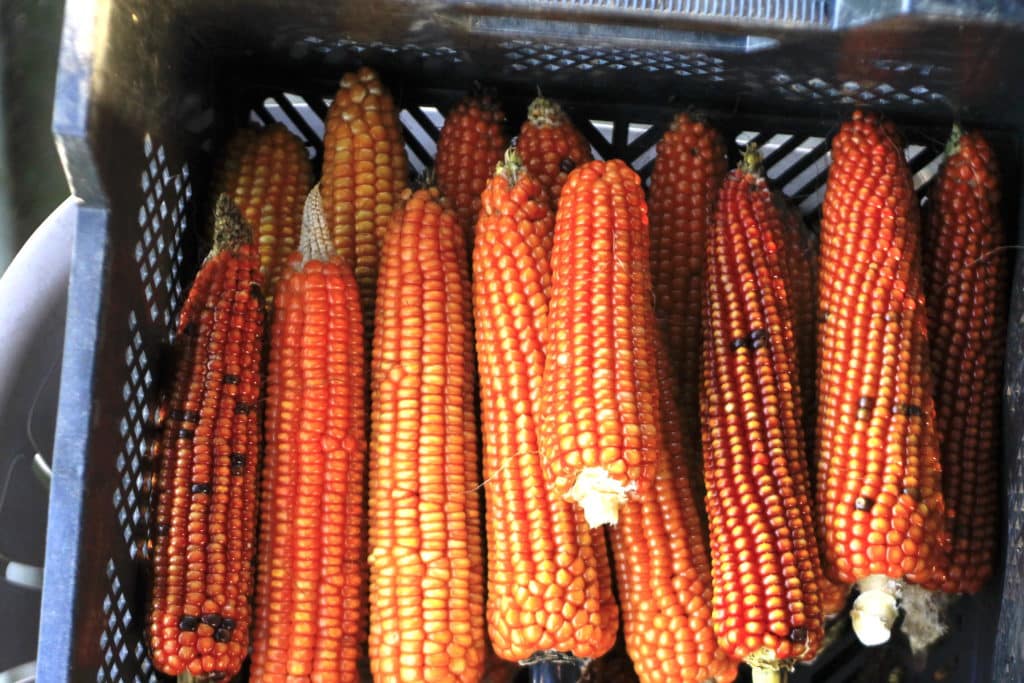
Getting this garden setup was a TON of work. And being our first go around, we certainly could have planned things out a little better. Thankfully, the old goat pasture was SUPER fertile and everything grew like crazy. In the end we had over 1,000 lbs. of potatoes, 200+ squash, 5 quarts of dry storage beans, and enough corn to last us a decade.
What other food did we have on hand heading into winter?
In addition to what the three-sisters garden provided, we also planted a roughly 30’ x 30’ vegetable garden where we were able to store 80-100 lbs. of beets and carrots, 10 heads of cabbage, and canned over 80 quarts of tomato sauce.
For fruit, there were also a number of things we foraged or picked locally: black raspberries, cherries, and strawberries. Throw in the ground cherries and rhubarb from our garden and we had a good section of our freezer set aside to keep fresh fruit coming when in-season fruit wasn’t available. We canned a handful of jars of jams and sauces but most was frozen giving us around 30 quarts of frozen fruit.
We also foraged and dried around four quarts of nettle, lemon balm, mint, and froze roughly 50 cups of pesto.
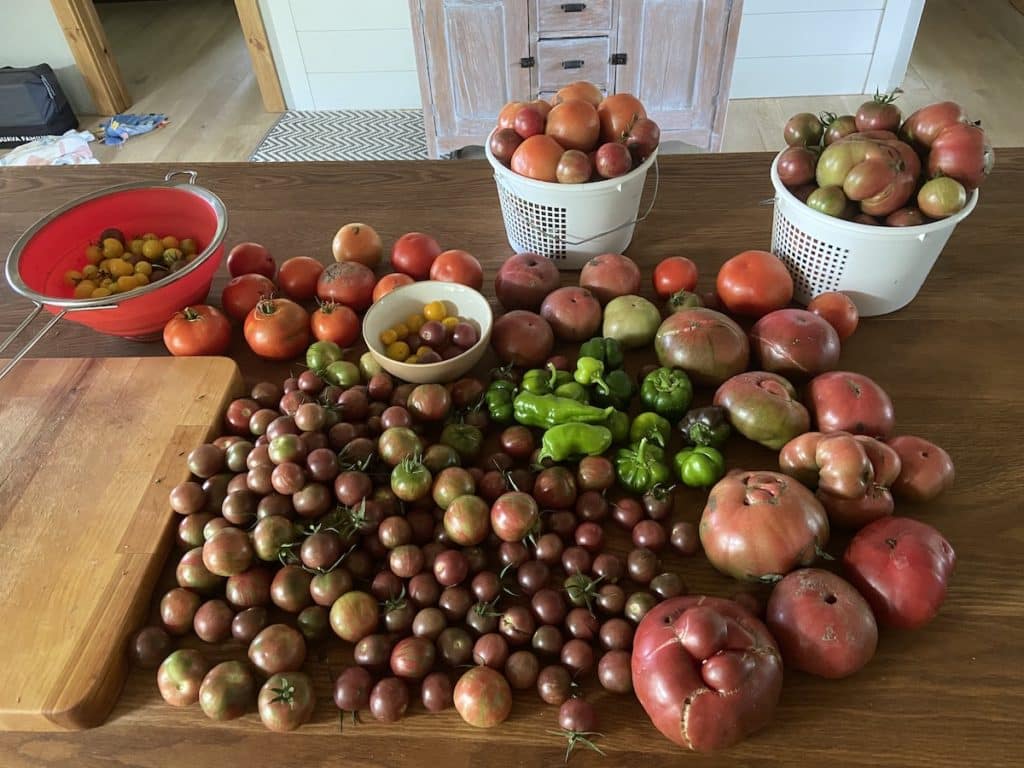
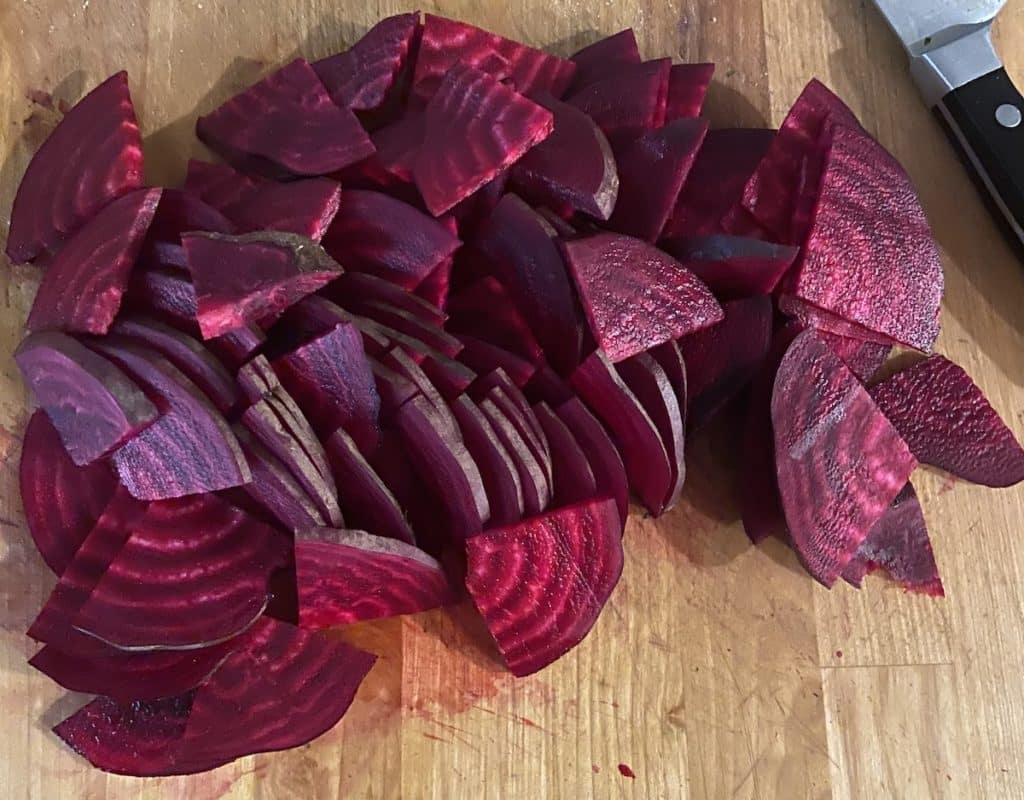

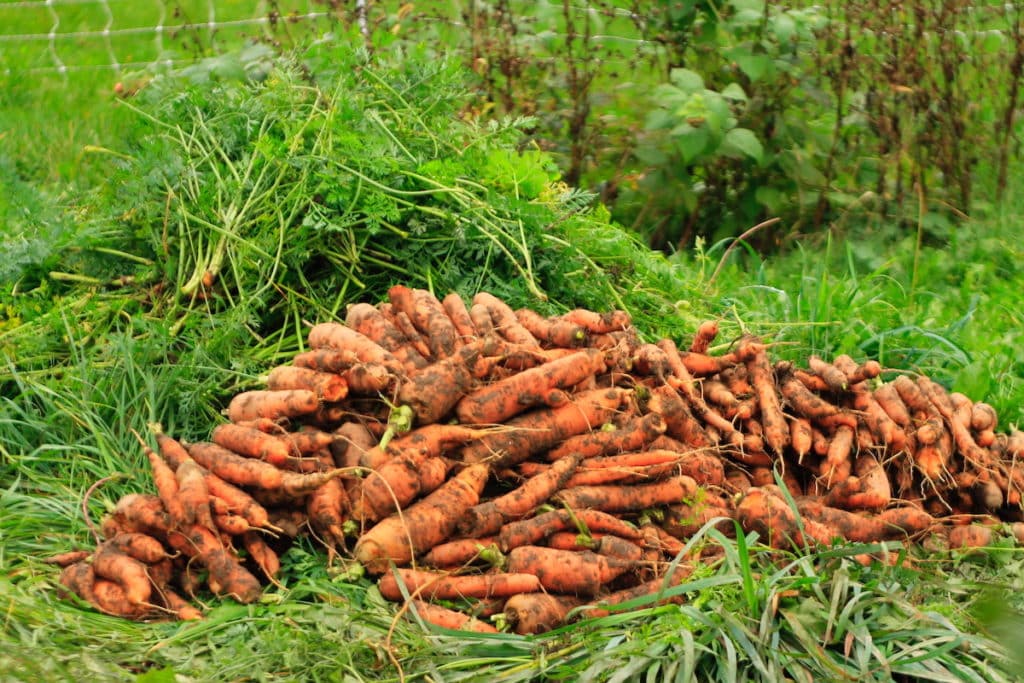

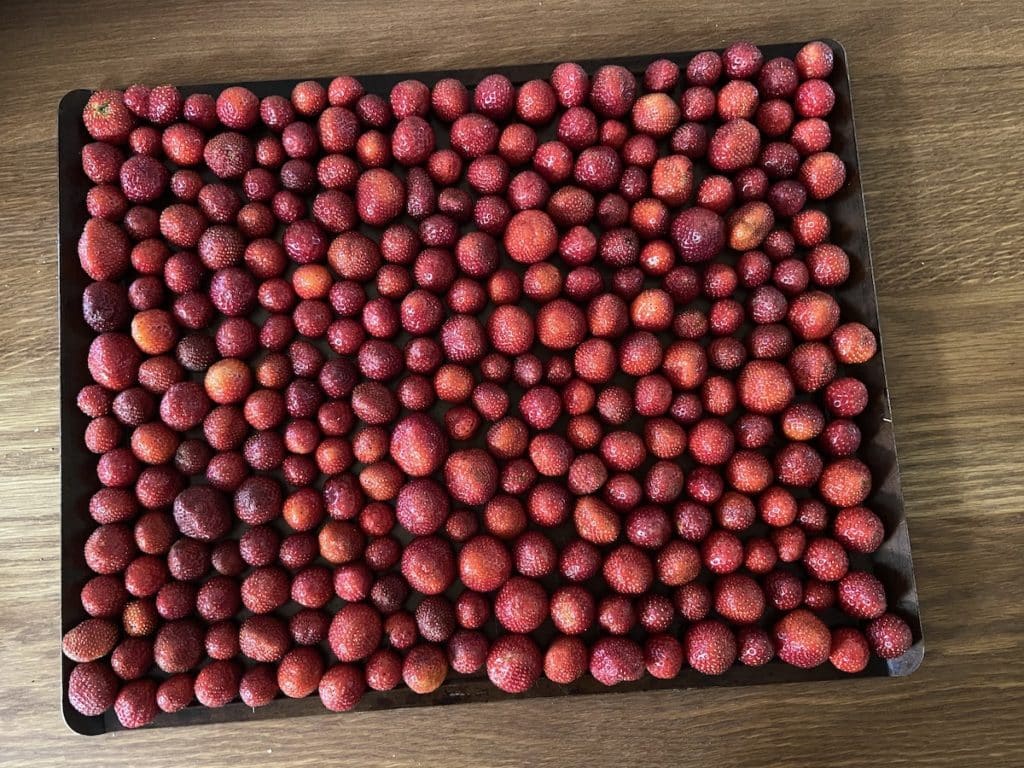
As for meat/dairy, our supply included:
- A beef cow we raised and then had processed in October.
- 25 chickens left from two batches of broilers we raised that summer.
- Our family milk cow that we milk daily and have a regular supply of milk, butter, cheese, yogurt, and other dairy products.
- 20+ laying hens for an abundant egg supply.
For our broilers we built a Suscovich chicken tractor that we were super happy with. His book walks you through each step. You can check it out here. We modified ours slightly to have a metal roof to hold up better over time, but the base design of the chicken tractor is fantastic.
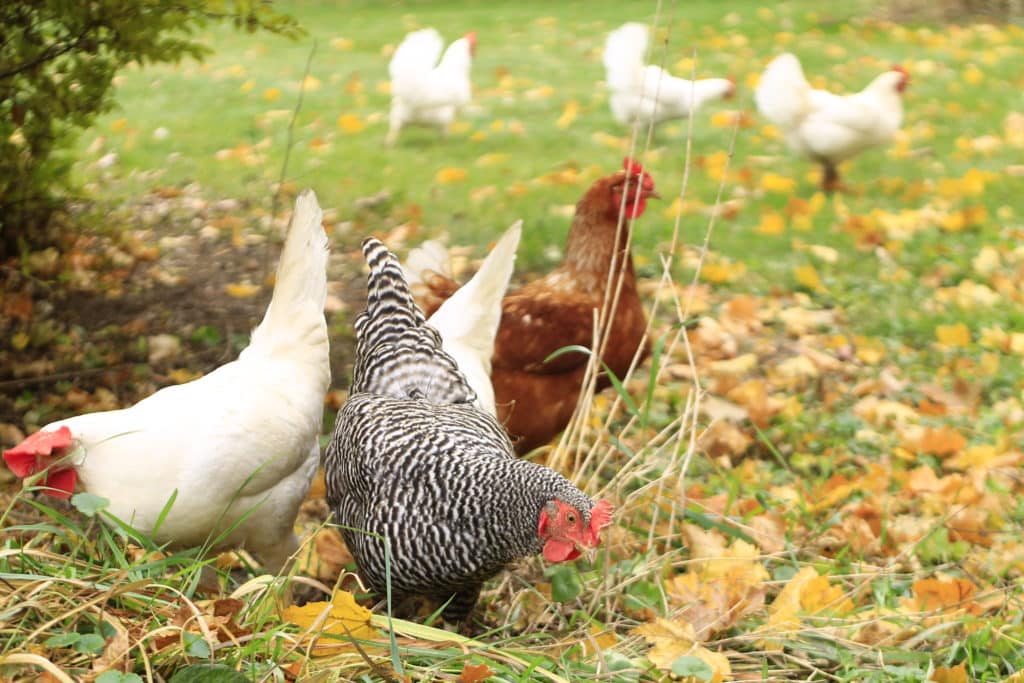
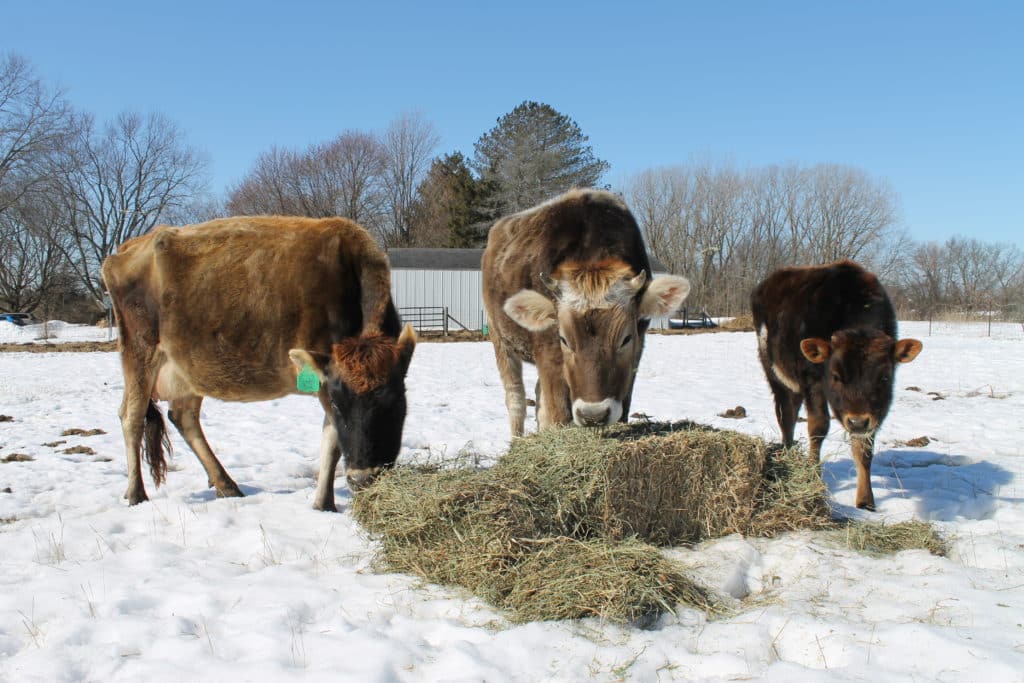
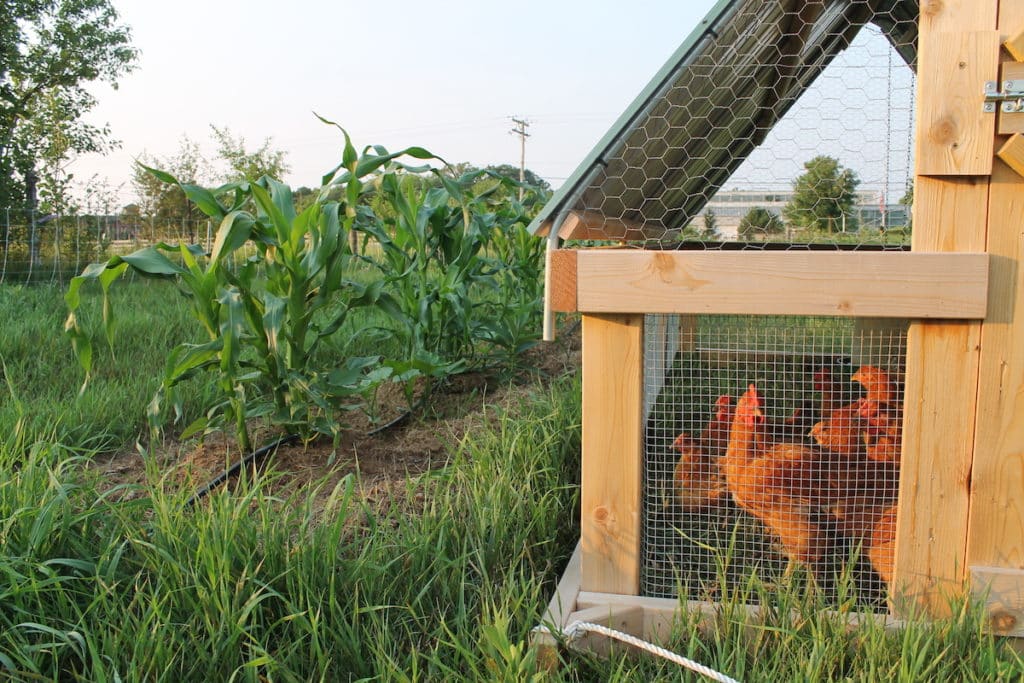
Whew! We were stocked heading into fall and winter. There’s no getting around the fact that it took hard work and a lot of man hours to get there. Since it was our first year on the farm, everything was new systems we had to set up or build. Gardens, chicken coops, fencing, food storage. We grew a lot, worked a lot, and learned a lot in our first year on our farm.
How is the Three Rivers Challenge going?
We are now a couple weeks into January and have not been to the grocery store since early November. With so much food in storage we just haven’t had to. It’s like having a grocery store right in our basement!
We’re focusing on eating what we have. This has taken creativity to avoid redundancy. For example, you can check out this Butternut Squash Enchilada Casserole recipe where we swap layers of butternut squash for tortillas. Or, this Potato Crusted Quiche that has become a family favorite!

For now, we have cut out other produce we’d typically rely on in the winter but can’t grow or source locally (i.e. avocados, bananas, and all the other fruits and veggies that fill grocery store shelves). But we really haven’t missed them too much! Not that we will never have those items or step foot in a grocery store again, but we wanted to stay committed and see how far we could go living off of what we grew and other locally sourced foods.
What are we eating all winter on our homestead?
With mostly the same base ingredients, this is where creativity with a variety of different sauces, seasonings, meats, and sides really helps keep things fresh. Here’s a basic list of what meals have looked like:
- Lots of soup, stew, and chili
- Egg casseroles, quiche, hash
- Winter squash creations
- Squash lasagna or enchilada casserole
- Pumpkin Pancakes
- Crustless pumpkin pie or custard
- Meats and sides
- Meat loaf with roasted beets and squash
- Burgers with carrot fries
- Steak and potatoes
- Shredded beef with coleslaw and cornbread
- Meatza or egg/cheese pizza crust with pesto/tomato sauce and toppings
- Slow cooked roasts with veggies
- Stuffed squash or loaded baked potatoes
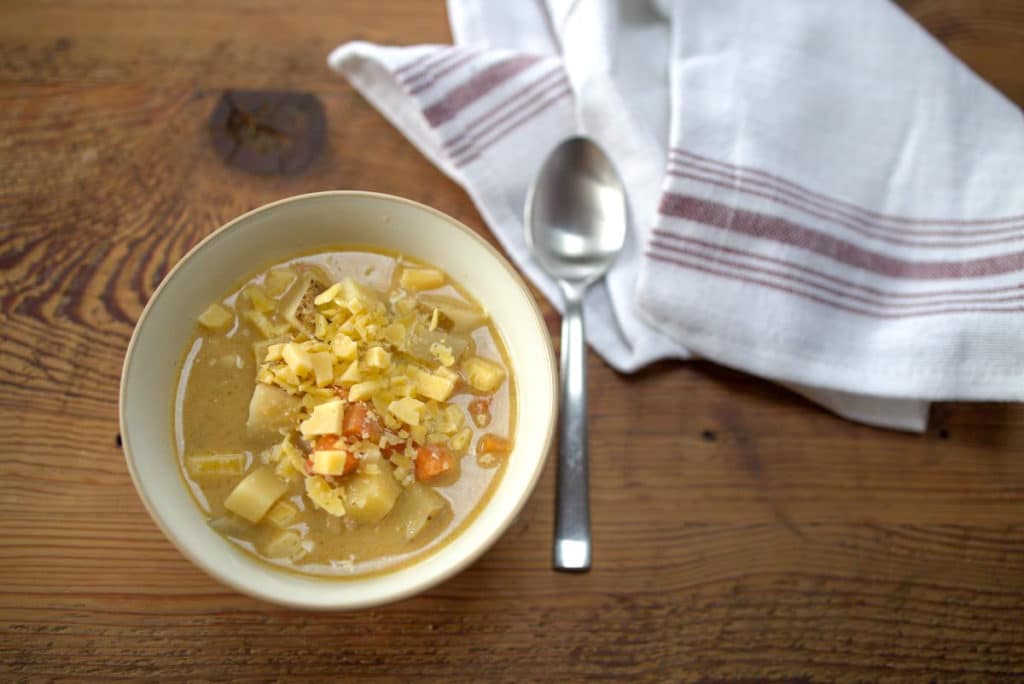
There are some items we buy in bulk like organic oats from Costco, and grains from a local mill for sourdough. The majority of what we make is gluten and grain free, so we do buy and use arrowroot flour and coconut flour in baking. There are also miscellaneous things we will buy from the store if needed like spices, baking soda, and cacao powder.
Is homesteading worth it?
For us, the answer is a humble and confident, “yes.”
One – It allows us to live a really simple, low-cost lifestyle where we’re not dependent on a ton of income. If we averaged the past year, we’ve spent around $100 on food per month.
Two – We know this lifestyle isn’t for everyone, but for us it aligns with everything we believe in. Moving your body, being in nature, living seasonally, shopping locally, bartering with neighbors. We live in abundance and are grateful for what’s been provided to us.
Three – It’s a whole family affair and we love including our children in the whole process – planting, weeding, harvesting, feeding, butchering – they have seen it all and been a part of it all. The result is an astounding value for the food on their plate. Nothing is wasted and they believe in that on the deepest level.

What are we thinking about doing differently next year?
For the 2022 growing season, we plan to grow a lot of the same things, but hopefully in a smarter, more streamlined fashion. We were constantly trying to keep our heads above water this past growing season. Plus, we actually grew way more food than we needed without a plan of what we’d do with the overflow.
That being said, we are planning to scale back this year, especially on the three sisters garden and potatoes, to what seems appropriate for our family. Also, we plan to think through our vegetable garden more strategically to not grow too much of any one thing, but a variety of foods that we both enjoy eating and growing.
Perennial plants and foraging are two areas that we want to focus on. Nettle, raspberries and so many other highly nutritious and medicinal foods pop up year after year all around us and we look forward to continuing to learn about how we can incorporate more of them. We planted 26 fruit trees last year and will add another 10 this year, along with establishing asparagus.
And most importantly, we want to have fun! Our first year will go down in the record books as a year of hard, hard work. Sure, there were many good times, laughs, and memories along with way. But we know it’s not a pace that’s sustainable for the long run. So, we invite more simplicity and smiles this next year.

There you have it – a window into our first year on our new homestead and how we are seeking to feed our family year-round… and how it’s gone! We are excited to continue learning and experimenting and are eager to see what triumphs and lessons 2022 will bring.
We’d love to hear from you! What have you done to stock up for the winter? What questions do you have? We are so grateful for this community and to learn from each other along the way!
Some of the above links are affiliate links. This means we earn a small commission on qualifying purchases at no cost to you.
New to homesteading and want more inspiration?
Hear from our friends Sadie, Barbra-Sue, and Wendy on building their homestead dream from scratch!
Sadie @ Wisconsin Homesteader – https://wisconsinhomesteader.com/how-to-become-a-homesteader/
It seemed like an unattainable dream to start a homestead of their own, but through lots of hard work, prayer, and testing, Sadie and her family have created a homestead of their own on a 40 acre piece of land in rural Wisconsin.
Barbra-Sue @Kowalski Mountain – https://kowalskimountain.com/a-dream-comes-to-life/
It’s easy to get caught up in our to-do list and get bogged down in how far we still have to go to reach a goal. Instead, we’re celebrating how far we’ve come! Join us as we reflect on our accomplishments since we purchased our homestead in 2016. We share with you the nitty gritty details of what we were looking for in a property and give some insight on where we are going.
Wendy @lhsimpleliving – https://littlehousesimpleliving.com/the-homesteading-movement/
The homesteading movement is on the rise and Wendy believes it’s here to stay. Her family started years ago on 1 ½ acres raising chickens, pigs, a garden and more. They now live on 11 acres but you can homestead anywhere, even if you don’t have a lot of space. Grind your own flour, make salves and tinctures, buy in bulk, barter and trade with friends. Just start small and being more self-sufficient is so freeing. Join a community for support and let’s get back to our roots, just like our ancestors did.
Read more on our homesteading journey:
Why a 5 Acre Homestead is the Perfect Size for a Beginner
Beginners Guide to Homestead Fruit Trees
Chicken Tractor Plans for 25 Chickens
How Many Cows Per Acre on a Small Farm
Homestead Garden Plan – Year Round Food on 1/4 Acre
Pin it for later!

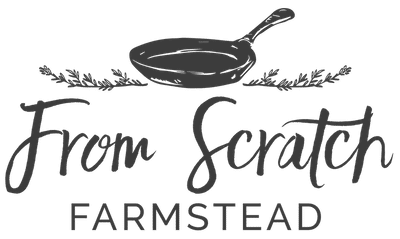


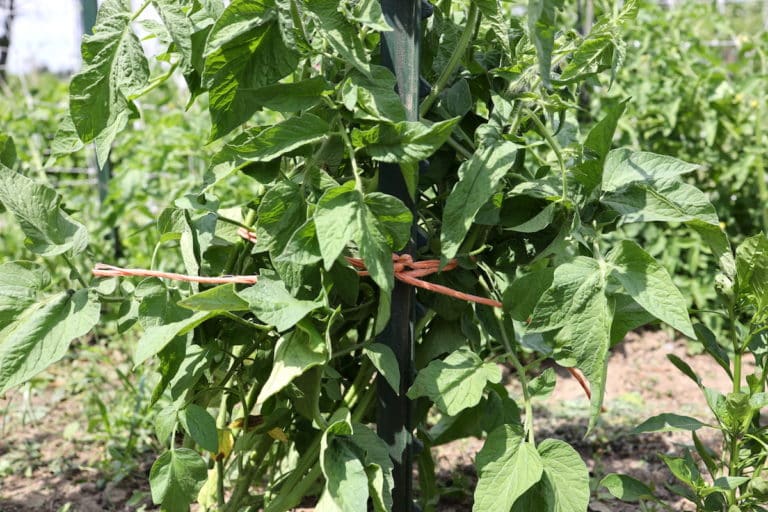
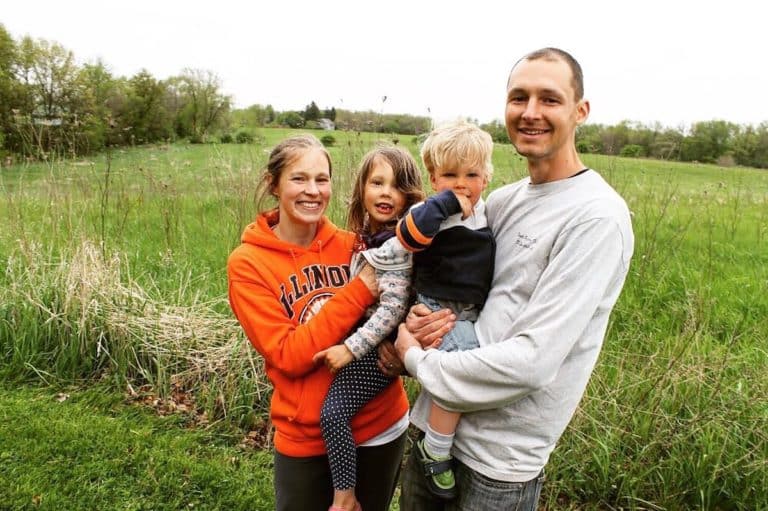

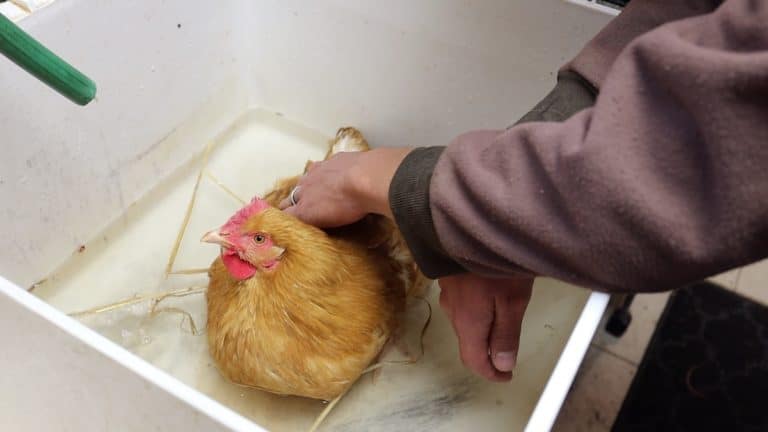

I love your story… quite an accomplishment!!
Thank you Barbra-Sue!
I really enjoy collaborating with you Joelle and learning all about your homesteading journey. You are such an inspiration to this commuity!
Thank you, Wendy!
Wonderful summary. Thanks so much for sharing and for the inspiration!
This is amazing! I loved reading your story. You and I share so many similarities….it’s just so neat for me to read about someone else who is living life like we are. And- we’re not even that far away from each other! It makes me feel like I’m not so strange in pursuing this lifestyle! haha! Your homestead is beautiful, your accomplishments are great, and you even gave me some ideas putting your chicken tractor between your garden rows like that! Thank you for sharing! 🙂 I enjoyed this post very much 🙂
Thanks, Sadie!! It’s so nice to know like minded folks who remind you that there are others doing this! Excited to learn more about what you guys are doing!